Description of diseases and pests of black currant
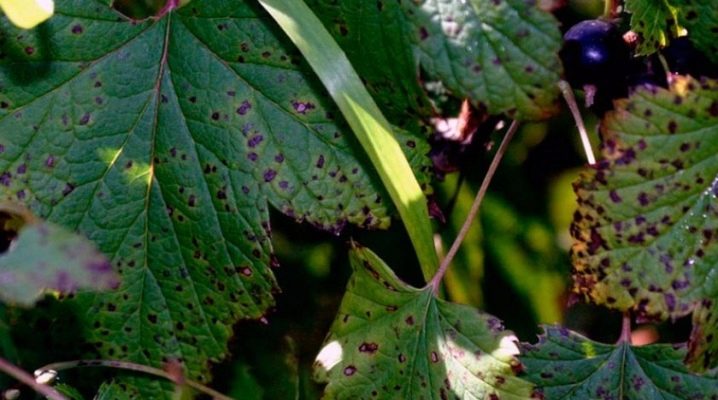
Crop plants are often attacked by parasitic insects and diseases. Black currant is no exception here. In this article, we will provide descriptions of the most common diseases and pests of black currant, as well as talk about methods of dealing with them.
Review and treatment of diseases
Fungal
Fungal diseases often affect black currants. The most common among them is a disease such as anthracnose. As a rule, it becomes active in late spring or early summer, and its peak occurs in June, by the period of berry ripening.
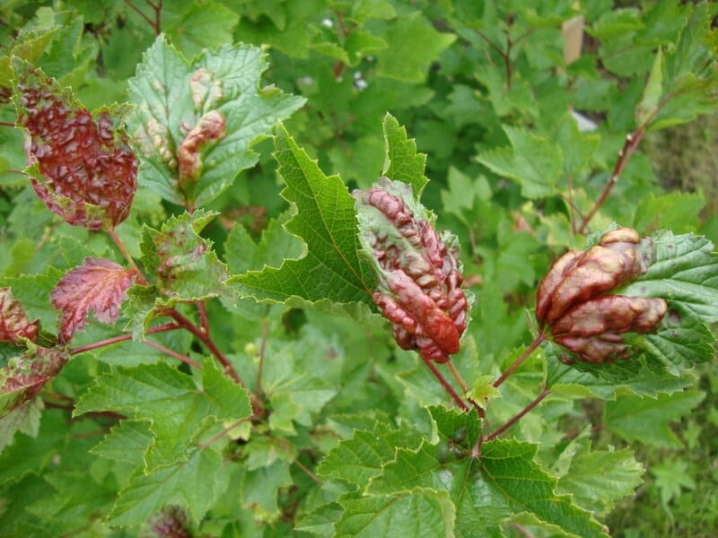
Anthracnose has the following symptoms: red spots form on the leaves, which have a black border and over time actively increase in size, dark tubercles also appear on them, the foliage begins to curl up and dry out, and brown ulcers appear on the shoots of the bush. At the same time, we note that in black currant, diseased leaves do not crumble, but continue to hang on the bush. It is necessary to treat this disease as soon as its first signs are detected, otherwise there is a high risk of contamination of healthy plants. Bushes can be treated with fungicidal agents such as Previkur and Fundazol.
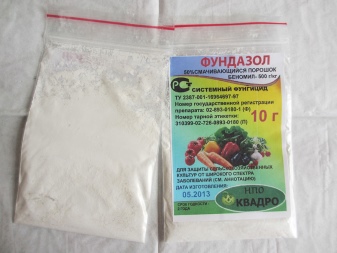
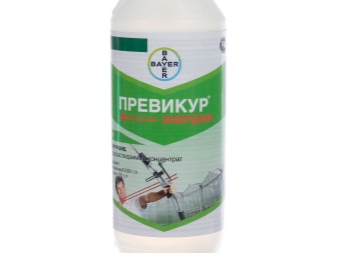
For prevention, it is recommended to use products prepared according to folk recipes.
American dew also often attacks currant bushes, which occurs most of the time with heavy rainfall. This disease can be determined by the following signs: white bloom forms on parts of the plant, and over time it grows and precipitates berries, the leaves of the plant subsequently fold and fall off, and the plaque becomes dark and denser. For the treatment of the disease, it is recommended to use drugs such as Fitosporin and Fundazol... For prevention, you can use wood ash. Note that in neglected cases it is useless to save the plant, it will be best to uproot it so that the disease does not spread to healthy bushes.
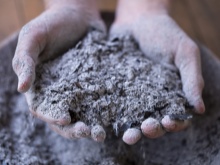
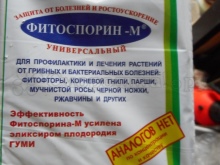
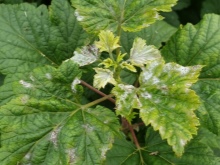
Another common fungal disease is this is septoria, or white spot. It is able to significantly reduce the amount of the crop. At first, the disease affects the foliage of the bush, rounded brown spots begin to appear on it, which later turn white and merge with each other. The leaf eventually dries up and falls off, and the disease, if no control measures are taken against it, switches to the stem and berries. To treat this disease, it is necessary to get rid of the diseased parts of the plant, and then spray it with a one-percent Bordeaux mixture or a fungicidal preparation.
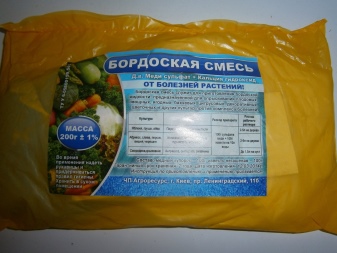

Often, black currants are affected and rust, because of which most often the bush begins to lose leaves in the middle of summer. There are two varieties of this disease - goblet rust, which causes reddish pads on foliage, and columnar. The main symptoms of the latter are the formation of growths on the leaf plate, as well as a change in its color. These diseases are treated in the same way, but the fight against them will make sense only in the early stages, otherwise the plant will need to be eliminated. It is best to use "HOM" or Bordeaux mixture to treat rust from the bush.
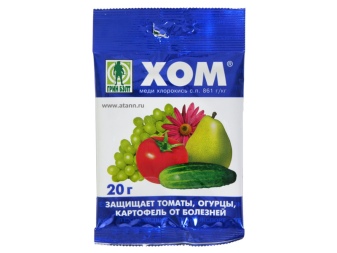
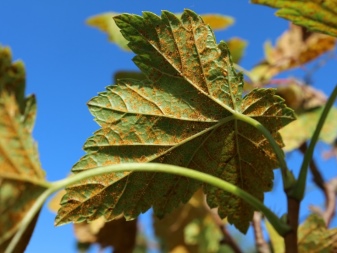
Nectrium desiccation is another fungal disease. It has the following symptoms: reddish dots form on the branches of the bush, which transform into tubercles and darken. Further, the currant branches dry and die. This disease is difficult to treat, and therefore the best way to fight against it is prevention. To interrupt its development, you can use a Bordeaux mixture, as well as eliminate diseased branches by covering the cut sites with garden pitch.
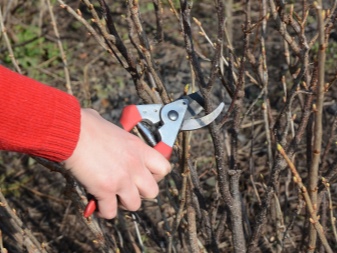

Viral
Viral diseases occur in black currants no less often than fungal ones. Among them, the first place is occupied by striped mosaic, which changes the color of the leaves: they turn yellow. At first, spots are formed only near the veins, but over time they cover the entire leaf as a whole. If a yellow patterned ornament is observed on the leaf blade, this indicates that it will be useless to fight the disease. In this case, the shrub must be eliminated by burning, and then the soil must be treated with Fitosporin.

Terry Is another common viral disease of black currant. It is not difficult to notice it: with a disease, the leaves begin to deform, become unnaturally long and coarser, and their color becomes dark. In addition, the aroma that is characteristic of this plant disappears, its flower clusters stretch, short shoots form, and the branches are deformed. There is no cure for this disease. If the above symptoms are found, it is recommended to uproot and burn the bush, and treat healthy plantings with products that contain boron or manganese.
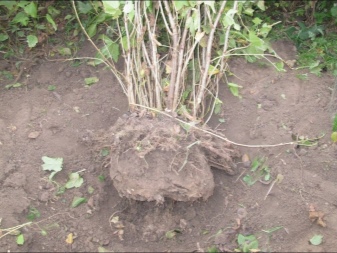
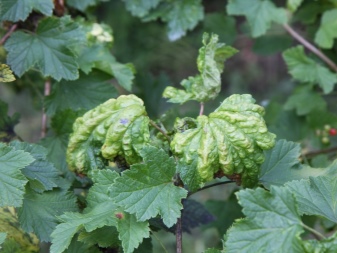
At the same time, we note that the main carriers of this disease are harmful insects, and therefore, in order to prevent the appearance of terry, it is necessary first of all to eliminate the parasites.
Bacterial
Blackcurrant bacteriosis is caused by bacteria that enter the bush through the wounds or stomata of the foliage. As a rule, it is bacterial spotting that affects this shrub. The disease begins to manifest itself during a period of high temperatures and humidity. In this case, it manifests itself as follows: spots are formed on the foliage, which later darken. The leaves themselves eventually change their color, begin to die off and fall off.
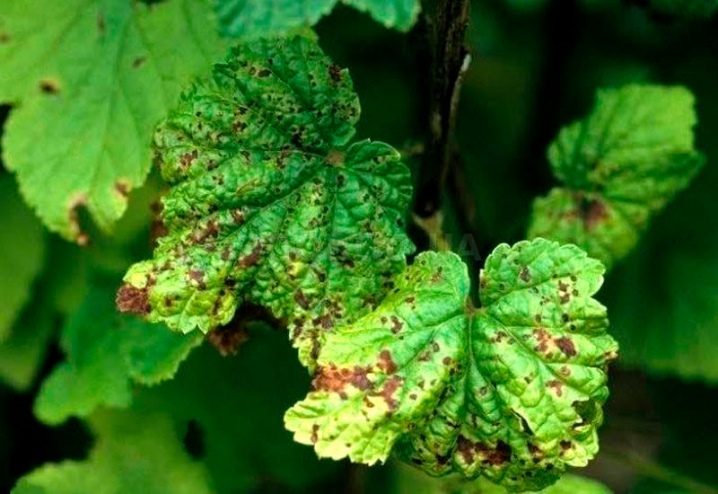
It is possible to stop the development of the disease only at its first stages. This can be done using tools such as Bordeaux mixture, copper sulphate and "HOM". If the case is neglected, then the shrubs are removed from the site by burning them.
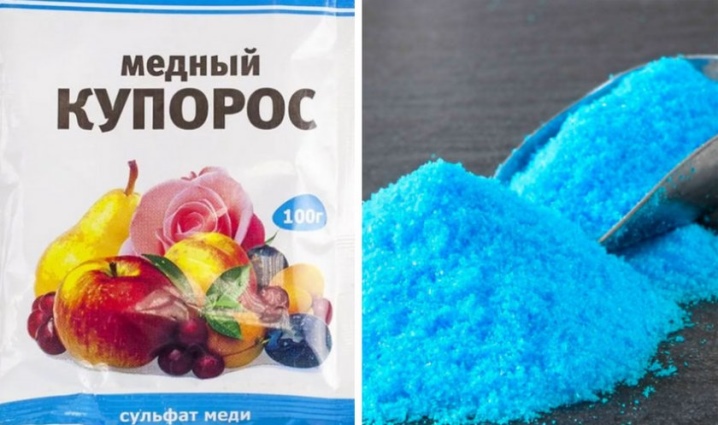
Non-infectious
As a rule, non-infectious diseases arise from improper care of black currants.
So, currants are often struck marginal necrosis, which is caused by an excess of chlorine in the soil. It is very simple to define this ailment: currant foliage begins to become covered with grayish spots along the edge, after which it dries and falls off. Similar symptoms can be observed with a lack of potassium. However, in the second case, there is no such strong difference between the healthy and the affected parts of the leaf blade. To treat this disease, you need to feed the planting with the help of ammonium nitrate, as well as eliminate diseased shoots.
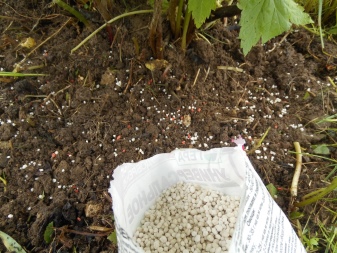
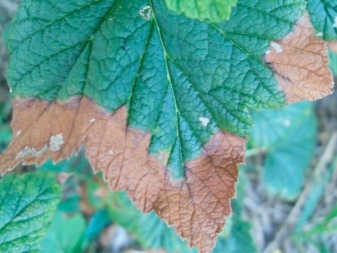
Often there is a problem such as withering black currant. If, at the same time, there are no other symptoms, then the shrub simply does not have enough water. Dealing with this problem is not difficult: you need to establish an irrigation regime.
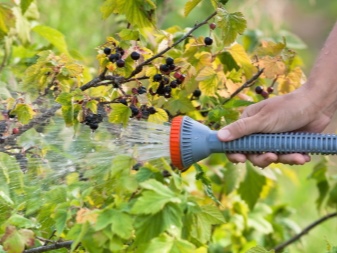
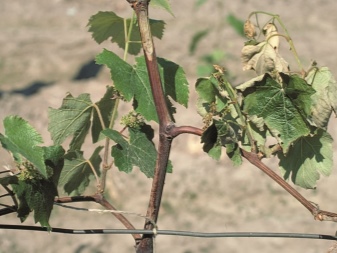
However, keep in mind that you should not overmoisten the soil, otherwise there is a risk of root rot, which can lead to the death of the bush.
If the foliage of the shrub changes its color, then this can also be a symptom of a non-infectious disease. As a rule, the cause of such problems is iron deficiency, in which the foliage turns yellow completely, or a lack of magnesium, when everything except the veins turns yellow. In the first case, the plant must be fertilized with a composition of chelated iron, and in the second, with potassium sulfate.
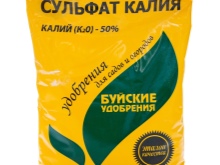
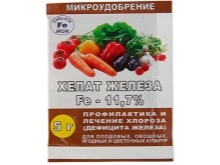
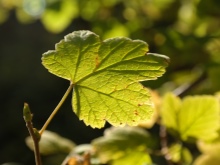
Pests and the fight against them
Harmful insects cause considerable damage to black currant bushes. First of all, they feed on plant juices, which significantly affects their condition, and not in the best way, and their immunity decreases, which makes the bush unable to resist diseases. In addition, parasites are the main carriers of diseases, which also does not benefit the plant.
Most often currant bush precipitates gall midge is a mosquito-like insect. This parasite lays eggs under the bark of the plant, in the cracks in its stems and in the unopened leaves. It is not difficult to understand that the bush was affected by this insect: red swellings form on its foliage. You can fight the pest with the help of Bordeaux mixture, Fitoverma, as well as by eliminating the affected areas of the bush.
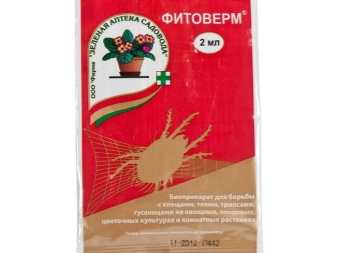
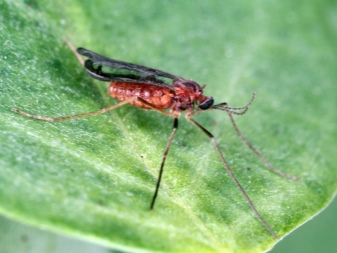
Another common shrub pest is this is a butterfly fire, which has an unremarkable serous color. By themselves, these butterflies do not harm, but their caterpillars, which are distinguished by a bright green color, cause great damage to the currants. To stop the attacks from these parasites, it is recommended to dig the soil in autumn and spring, as well as to use agents such as Actellic and Lepidocide.

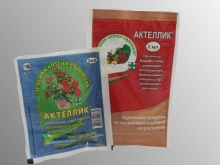
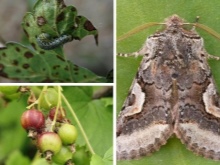
Kidney mite - another parasite that attacks black currant. It is a serious parasite that can destroy an entire crop. It is not difficult to understand that he attacked the plant: the buds of the bush become swollen and take on a rounded shape. Such buds must be burned along with the shoots. Besides, it is recommended to spray the plant with preparations containing sulfur, for example, "Kinmiks" and "Neoron".
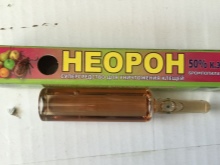
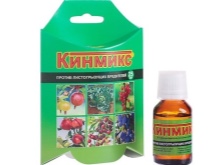
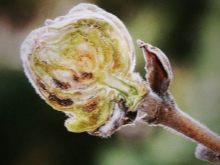
Kidney moth Is also a common parasite. It is the larvae of this insect that are harmful, since, when they hatch, they cause enormous damage to the ovaries of the plant. You can get rid of them with the help of treatments such as Actellic and Karbofos.
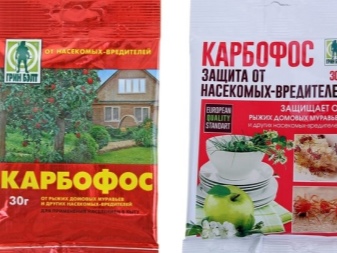
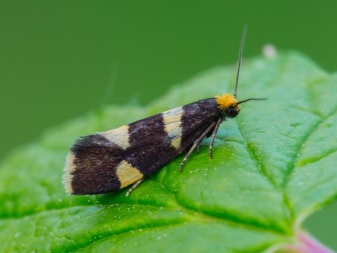
The shoot aphid is another parasite. As a rule, it is actively protected by ants, since they feed on the juices of aphids, which it secretes in the process of feeding. For this reason, to eliminate aphids, it is also necessary to destroy anthills. Against the aphid itself, remedies such as Karbofos, Actellic and Nitrafen. In addition, plants can be planted near the bush that scare off the parasite with their specific aroma, namely mustard, garlic, onion or coriander. During fruiting, it is recommended to resort to biological preparations - among them "Aktofit" is especially distinguished.
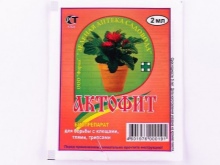
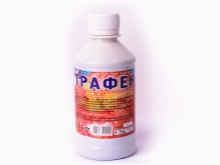
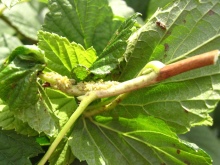
To save the plant, you need to fight with berry sawfly, the larvae of which feed on the pulp of berries. Subsequently, the fruits ripen earlier than necessary, but it is simply impossible to eat them. These berries need to be picked to prevent the parasites from crawling out and switching to another plant. The fruits need to be boiled to eliminate the larvae. However, the struggle does not end at this stage: many larvae hide in the soil, where they mature and continue to attack the bush.
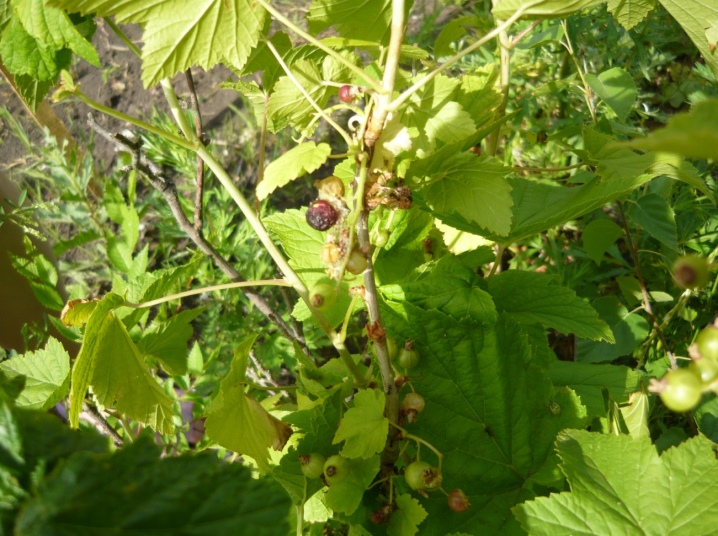
To get rid of the parasite, it is necessary to regularly dig the soil, and also spray the bush with insecticides before it begins to bloom.
Prevention measures
Preventive measures can help provide the plant with adequate protection from parasites and diseases, as well as identify the presence of problems in the early stages of their development.
So, first of all, the plants must be regularly inspected for the presence of lesions or pests.
For planting, it is recommended to use a reliable planting material. It must not be damaged. In this case, it is best to give preference to resistant varieties that are frost-resistant and strong immunity.
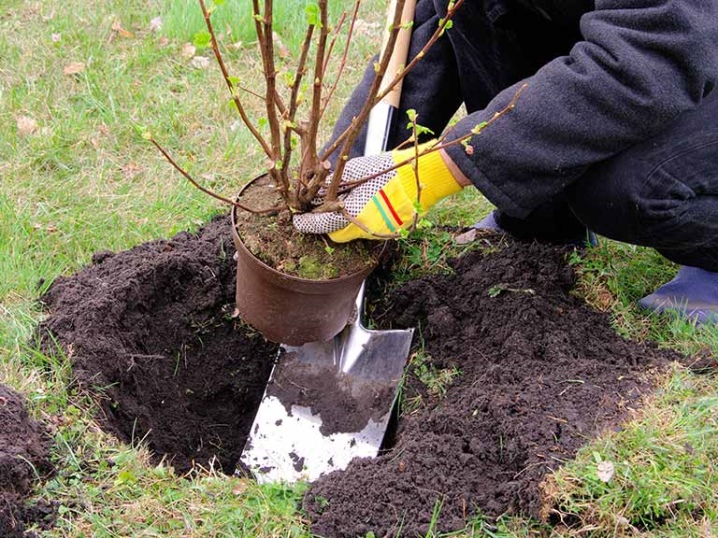
It is worth mentioning the need to harvest the foliage and then burn it after harvesting. Spores of harmful fungi, parasites and their larvae often hide in old foliage. There, they easily endure wintering and become more active for the next season, when it gets warm.
The plant also needs to provide quality care. It includes regular preventive treatments with special and folk remedies, the introduction of fertilizing necessary for the shrub, as well as adherence to the irrigation regime. It is also worth mentioning the need to prune the branches of the shrub.
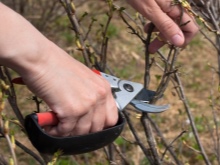
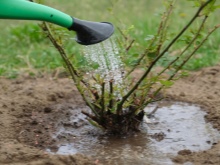
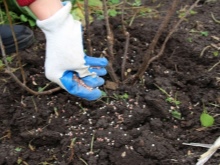
Don't forget about disinfection of garden tools - it is with its help that diseases are often transferred from diseased plants to healthy ones.
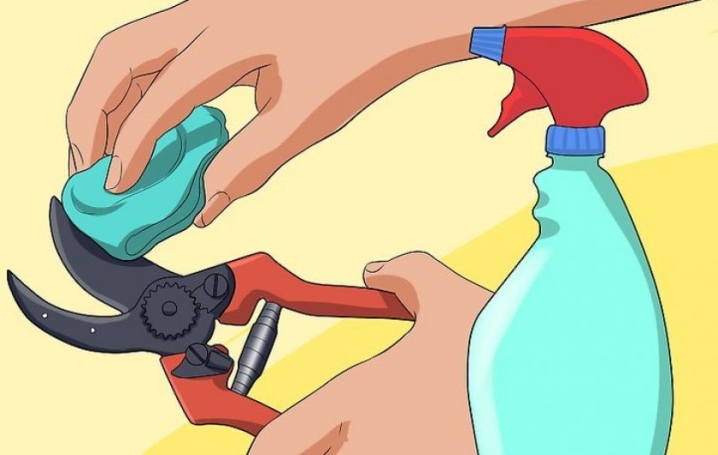
You should not neglect the elimination of weeds from the site - they are often a haven for harmful insects, which eventually move to cultural plantings.
Resistant varieties
Planting resistant blackcurrant varieties avoids most of the problems. Such bushes, as a rule, withstand the attacks of many parasites, and many diseases. So, the following resistant varieties of this plant are distinguished: Sweetheart, Rita, Pygmy, Lazy, Centaur, Venus, Pharaoh, Titania, Tizel, Treasure and Black Pearl.
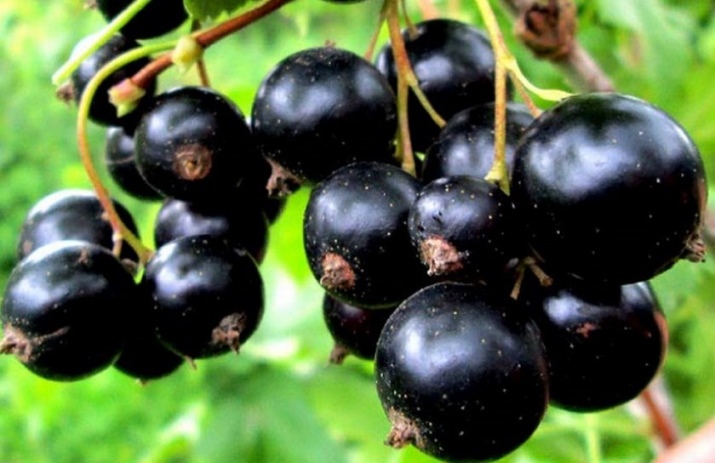
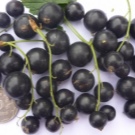
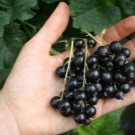

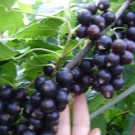
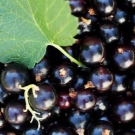









The comment was sent successfully.